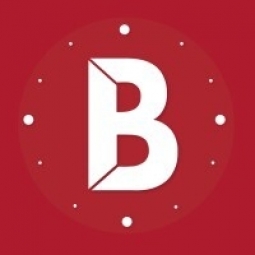Download PDF
Streamlining Operations and Enhancing Efficiency at The Briar Rose Bar & Grill with IoT
Applicable Industries
- Cities & Municipalities
Use Cases
- Personnel Tracking & Monitoring
- Time Sensitive Networking
The Challenge
The Briar Rose Bar & Grill, a renowned hospitality establishment in County Cork, Ireland, faced significant operational challenges as it expanded over its 50 years of existence. The management, led by Peter Fahey, recognized the need to automate and streamline their manual processes to maintain their high-quality service. The primary challenge was the time-consuming and inefficient method of managing staff schedules and attendance. Employees would sign in and out on paper, and administrative staff would manually input this data into their systems. This process was not only laborious but also prevented the business from gaining insights into historical data, making demand planning difficult.
About The Customer
The Briar Rose Bar & Grill is a well-established hospitality business located in County Cork, Ireland. With over 50 years of experience in the industry, the restaurant has grown and evolved, offering a diverse menu that caters to a wide range of dietary preferences. The establishment is known for its high-quality food and service, offering a full grill menu and a value-centric lunch offering seven days a week. The restaurant is conveniently located near the city center and Douglas village, making it a popular choice for both locals and visitors.
The Solution
The restaurant adopted Bizimply, an automated time and attendance management system, to streamline their operations. With Bizimply, the scheduling and timecards of the staff are now efficiently managed, allowing for better planning of shifts and coverage during peak customer periods. The system also feeds staff hours directly into payroll, eliminating errors and ensuring employees are paid correctly and on time. The reporting features of Bizimply provide easy access to data and the ability to download reports on various aspects of the business. This has given the management the ability to analyze performance and identify areas for improvement. Additionally, the MyZimply app has improved communication with staff, providing them with their schedules directly on their mobile devices.
Operational Impact
Quantitative Benefit
Related Case Studies.

Case Study
Turning A Stadium Into A Smart Building
Honeywell created what it called the “intelligent system” for the National Stadium in Beijing, China, turning the venue for the opening and closing events at the 2008 Summer Olympics into a “smart building.” Designed by highly controversial artist Ai Weiwei, the “Bird’s Nest” remains one of the most impressive feats of stadium architecture in the world. The 250,000 square meter structure housed more than 100,000 athletes and spectators at a time. To accommodate such capacity, China turned to Honeywell’s EBI Integrated Building Management System to create an integrated “intelligent system” for improved building security, safety and energy efficiency.
.png)
Case Study
Smart Street Light Network (Copenhagen)
Key stakeholders are taking a comprehensive approach to rethinking smart city innovation. City leaders have collaborated through partnerships involving government, research institutions and solution providers. The Copenhagen Solutions Lab is one of the leading organizations at the forefront of this movement. By bringing together manufacturers with municipal buyers, the Copenhagen Solutions Lab has catalyzed the development and deployment of next-generation smart city innovations. Copenhagen is leveraging this unique approach to accelerate the implementation of smart city solutions. One of the primary focus areas is LED street lighting.

Case Study
Buoy Status Monitoring with LoRa
The Netherlands are well-known for their inland waterways, canals, sluices and of course port activities. The Dutch Ministry of Infrastructure indicates that there are thousands of buoys and fixed items in and near water environments that would profit from IoT monitoring. One of the problems with buoys for example, is that they get hit by ships and the anchor cable breaks. Without connectivity, it takes quite some time to find out that something has happened with that buoy. Not to mention the costs of renting a boat to go to the buoy to fix it. Another important issue, is that there is no real-time monitoring of the buoys at this moment. Only by physically visiting the object on the water, one gains insight in its status.

Case Study
China Mobile Smart Parking
Smart Parking, powered by NB-IoT technology, is making it easier for drivers to find free parking spots. Cities can better manage their parking assets and maximize the revenue available to them as a result. Drivers searching for parking create congestion and pollution by circling and hunting for available parking. Smart Parking services are able to significantly ease these problems by guiding a driver directly to a parking space.

Case Study
Barcelona Case Study
Barcelona’s heavy traffic and its associated high levels of pollution were the primary factors that motivated some companies and universities to work on strategies for improving traffic in the city centre. Bitcarrier is one of the technologies involved in the In4Mo Project, whose main objective is to develop the applications that form the core of smart mobility, one of the fundamental pillars of the smart city concept.






